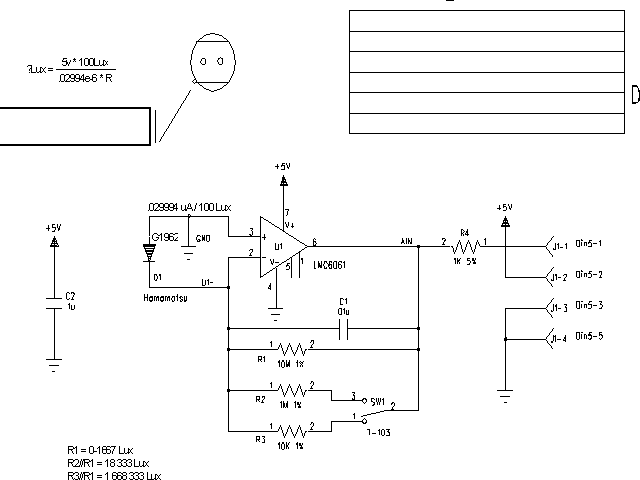
The ultraviolet ray probe
The ultraviolet ray sensor uses a photodiode which possesses a spectral response in the ultraviolet range. This photodiode produces a voltage which his linear with light intensity.
This probe is extremely rapid and sensitive. If you measure the light intensity of a lamp connected in a wall outlet (60 Hz), the probe will sense the luminosity variations caused by voltage variations. The use of a filter is strongly recommended for such experiments. $ 4.6.6
Because of its design, this probe is very directional. Aim it directly at the light source.
To modify its range, flip the switch located at the extremity of the probe.
Before calibrating the sensor, determine the operational range which you intend to use in the experiment. It is important to re-calibrate the instrument if you change its range of operation.
The first value is always 0 volt and it corresponds to a luminosity unit of 0.
The second value is 5 volts and corresponds to the following:
Lux |
Foot-candle |
|
1,667 |
154.87 |
|
18,333 |
1703.2 |
|
1,668,333 |
154,993 |
Wipe transparent tube with a soft cloth. Do not submerge in liquid.
Ozone Measure the variation of the intensity of ultraviolet rays during a day.
Cloud Determine the effects of a cloud passing through over the intensity of ultraviolet rays.
| Response time | 10 Ás |
Schematics
